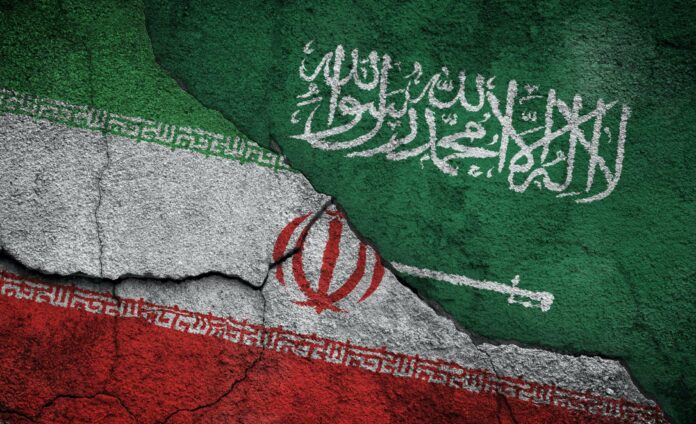Ali Nejat – Writer and academic researcher, Middle East specialist
Introduction:
Saudi-Iranian relations were very tense; Because of political and sectarian differences throughout history, even in the past three decades, the relations has been cut twice. Diplomatic relations were first severed in 1987, after the Mecca incident, and for the second time in 2016, after attacking Saudi diplomatic venues in Iran. Since 2016, the political relationship between Riyadh and Tehran has been completely severed; Because of the intense differences between the two countries, related to the divergence of political and intellectual elements and the conflict of political and economic influence, which was reflected in the political relations between the two countries. One of the effects was the burning down of Iranian protesters by the Riyadh embassy in Tehran and its consulate in Mashhad, following Saudi Arabia’s execution of the Shiite cleric “Tiger al-Nimr” in 2016, which led to Riyadh withdrawing its diplomatic mission from Tehran, and cutting ties with Iran.
After this period of political estrangement and proxy war, negotiations between Riyadh and Tehran began in April 2021, with Iraqi sponsorship and an unannounced meeting between the delegations of the two countries in the Green Zone in Baghdad. From April 2021 to April 2022, Baghdad hosted five rounds of talks between Tehran and Riyadh officials. Saudi Arabia and Iran have agreed to end their seven-year diplomatic rupture after secret and open talks were hosted by Iraq and Oman. On 10 March 2023, the two sides reached an agreement that would provide the political ground for the return of normal relations between Riyadh and Tehran, and the declaration of the agreement and its provisions in China, which entered as a supporter and guarantor of the Saudi-Iranian agreement.
The agreement ended seven years of estrangement, with Iran reopening its embassy in Riyadh, in early June 2023, and in mid-June Faisal bin Farhan arriving in Iran for the first visit of a Saudi foreign minister in more than a decade, and agreeing with his Iranian counterpart Hossein Amir Abdullahian, that the Riyadh embassy in Tehran and its consulate in Mashhad would return in the near future. This development opens the door to questions about the causes of Iranian-Saudi reconciliation and its implications for regional issues, particularly the situation in the squares, which for decades have witnessed intense competition and proxy wars between the two parties.
In this context, this paper seeks to answer two fundamental questions: What are the reasons and motives for the resumption of diplomatic relations between Iran and Saudi Arabia? What are the implications of the normalization of relations between Tehran and Riyadh for the Middle East? To answer these two questions, the research structure was divided into three parts. After analysing the causes and roots of the tension in relations between Iran and Saudi Arabia, Tehran and Riyadh’s motives for resuming relations will be noted, and eventually the implications for the Middle East of normalizing relations between the two most important countries and regional powers will be studied.
The roots of Iran-Saudi disputes
Iran-Saudi relations have experienced many ups and downs since the 1979 victory of the Revolution, and the establishment of the Islamic Republic of Iran, therefore, they can be divided into three periods of cooperation, competition and conflict according to internal, regional and international events that determine the type of relationship between these two countries. Saudi-Iranian disputes trace their roots back to 1979, when Riyadh declared its support for the regime of Shah Mohammad Reza Pahlavi in the face of the wave of popular protests launched against him in late 1977, which ended with the overthrow of his regime in 1979. At the end of Mohammad Reza Pahlavi’s reign, Iranian-Saudi relations were in the best condition. In January 1978, the Shah of Iran paid a historic visit to Saudi Arabia, and was warmly received by then-Saudi King Faisal.










